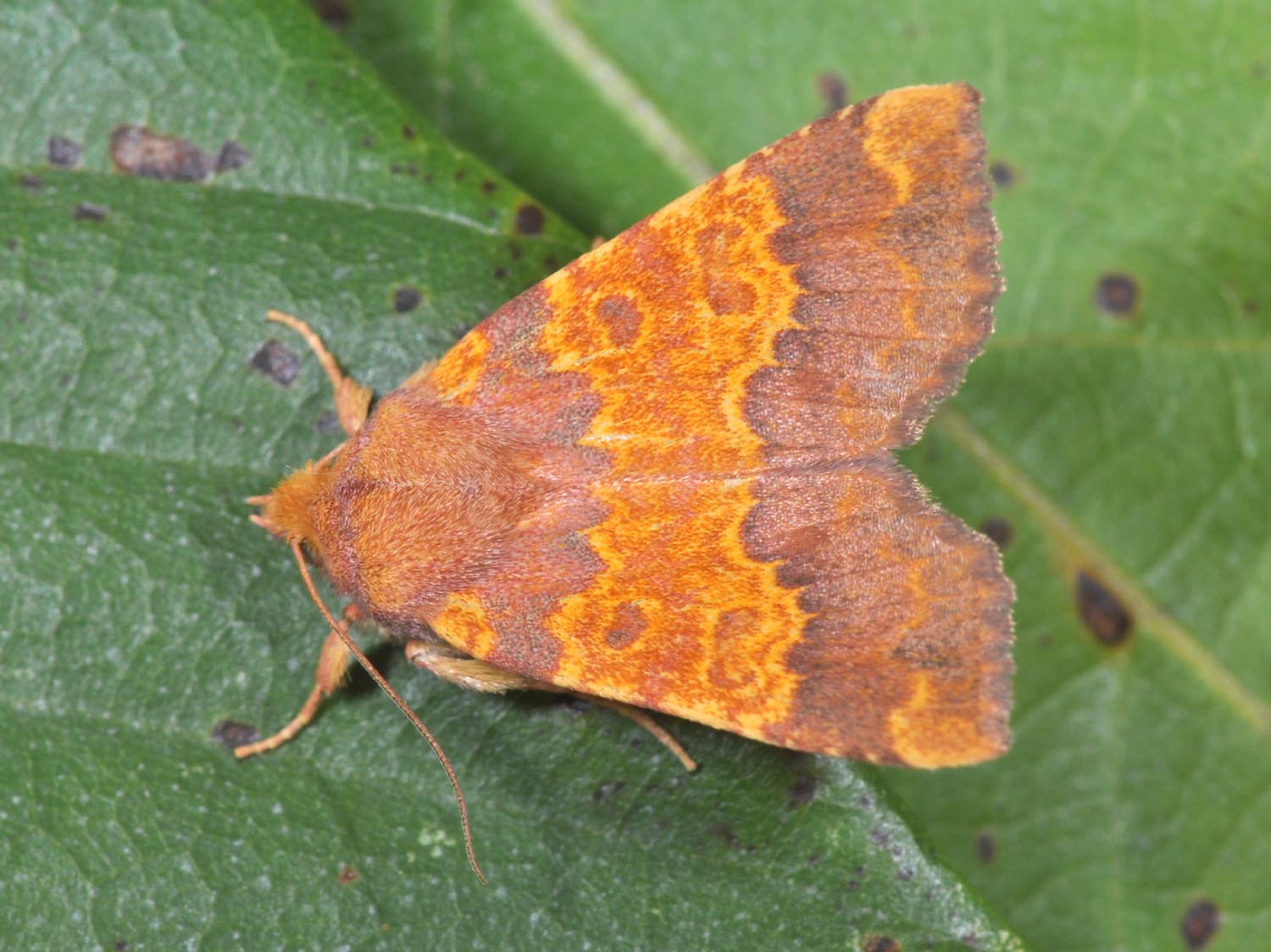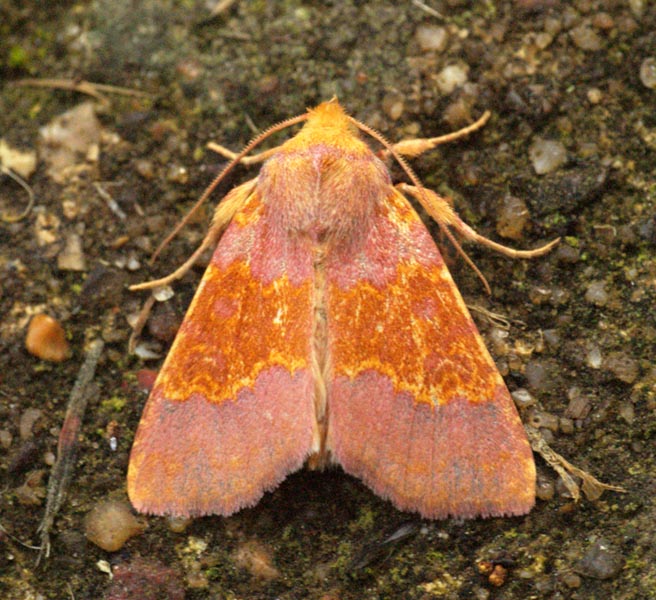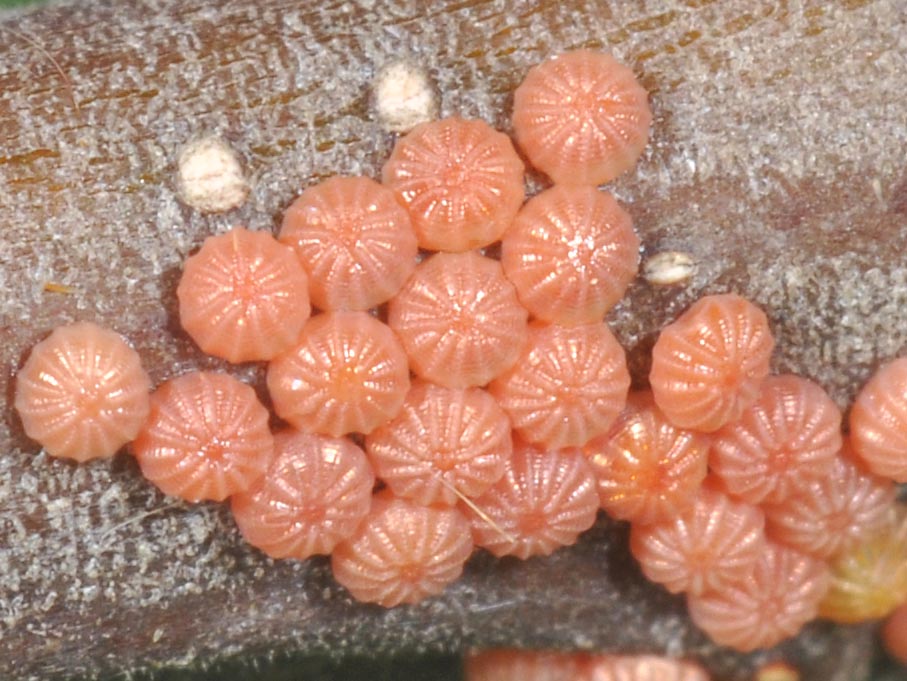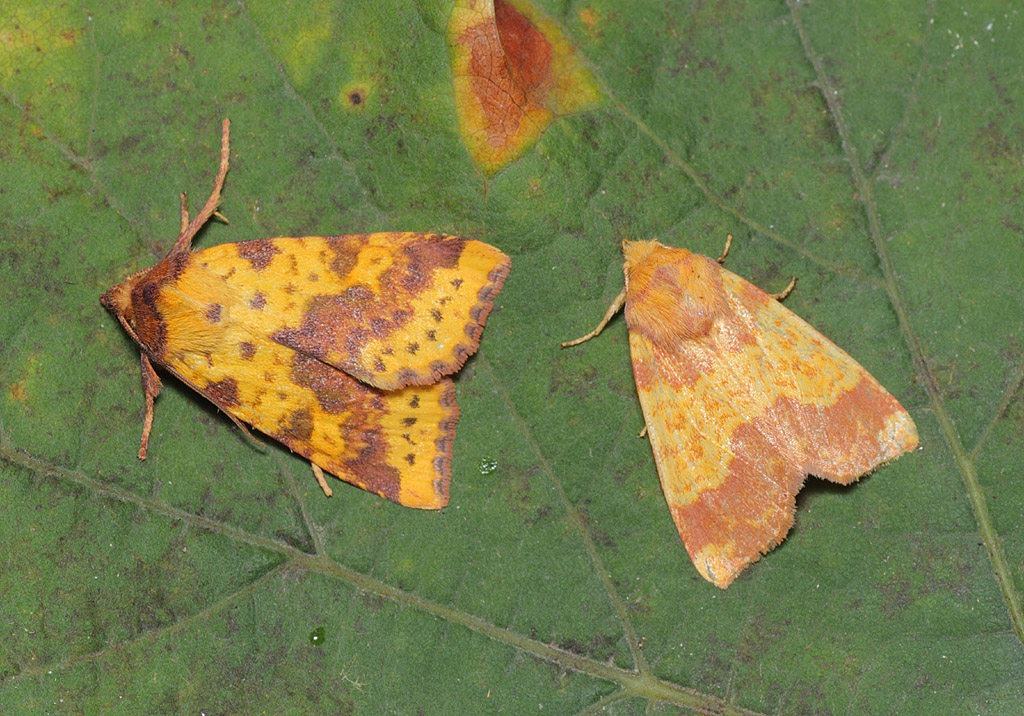Tiliacea aurago
Beech - Gelbeule ( tiliacea aurago ). Butterfly with partially missing scales on the apex.
The beech - Gelbeule ( tiliacea aurago ) ( Syn: Xanthia aurago ), also referred to as gold Gelbeule or beech Gold Owl, is a butterfly of the family of cutworms ( Noctuidae ). The name aurago is derived from the Latin " aurum " = gold.
- 5.1 Notes and references
- 5.2 Literature
Features
Butterfly
The wingspan of the butterfly is 29 to 38 millimeters. The color in the middle of the forewing varies from golden yellow to orange-red. Basal and Saumfeld shimmering dark red, purple or brown gray yellow. Kidney and ring flaw are darkened, but usually indistinct. Near the apex, and the root box at the front edge bright, yellowish spots are often visible. The hind wings are strikingly colored yellow to reddish, darker in the seam area.
Egg
The egg is flat conical, truncated top and shows very broad longitudinal ribs. First, it is brownish red and takes just before hatching of caterpillars on a gray-brown tint.
Caterpillar
Adults caterpillars have a roll-like shape, are zeichnungsarm and have a brownish, sometimes slightly reddish or greenish color. They are smooth and translucent. The thin back - and side- back lines have as well as the point warts a whitish color. The spiracles are black. What is striking is the very small head.
Similar Species
Although the beech - Gelbeule color varies greatly on the fore wings, they must be distinguished on the basis of striking yellow to reddish- brown hind wings well of others yellow owl species.
Geographical distribution and habitat
The species is widespread in Europe to Turkey and missing only in the northernmost regions as well as in southern Spain and southern Greece. In the Alps, it rises to heights of 1100 meters. The animals are mainly in beech forests, mixed forests, found along forest edges, sunny slopes and in parklands.
Way of life
The moths are crepuscular and nocturnal and live from August to October. You like to visit scale bait and appear at night also to artificial light sources. During the day they rest sometimes on the ground between dead leaves and are thus difficult to detect. Overwintering stage is the egg. The caterpillars are preferred to be found on the European beech (Fagus sylvatica), also at Hornbeam (Carpinus betulus ) and oaks (Quercus ) and blueberries (Vaccinium myrtillus). They eat first on the buds of deciduous trees, then on the flowers and later on leaves. The caterpillars of time covers the months of April to June.
Endangering
The beech - Gelbeule is widely used in the German federal states and is classified on the red list of threatened species as not at risk.








